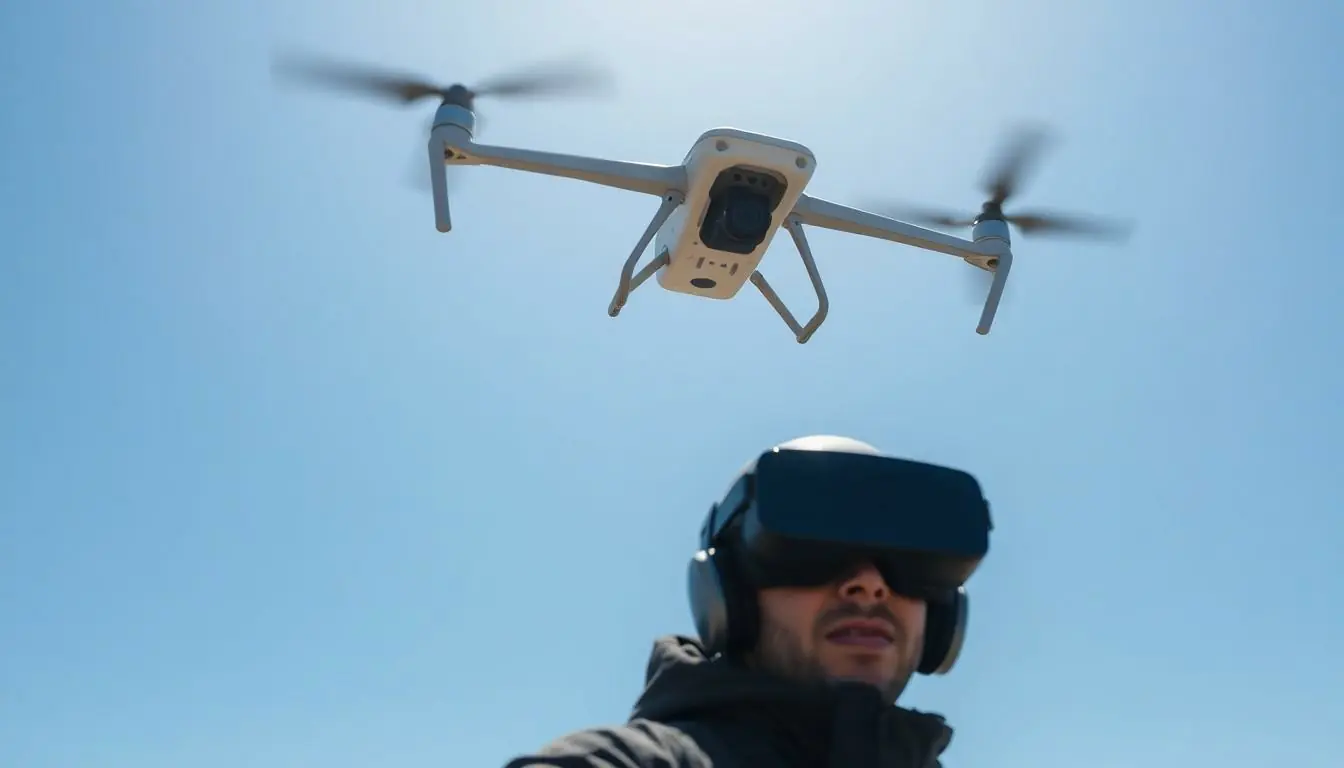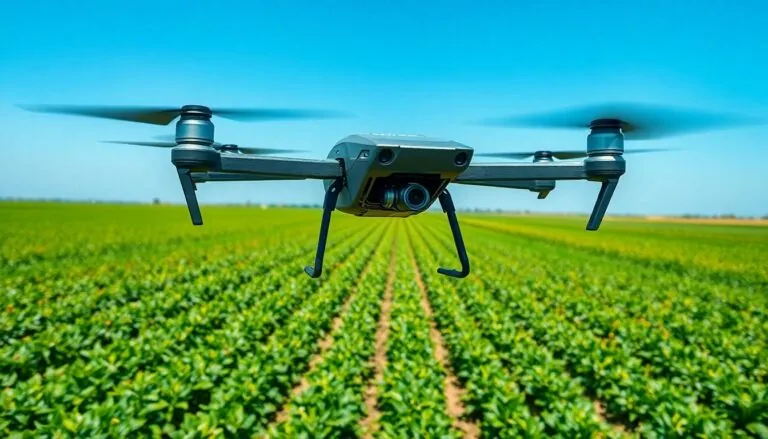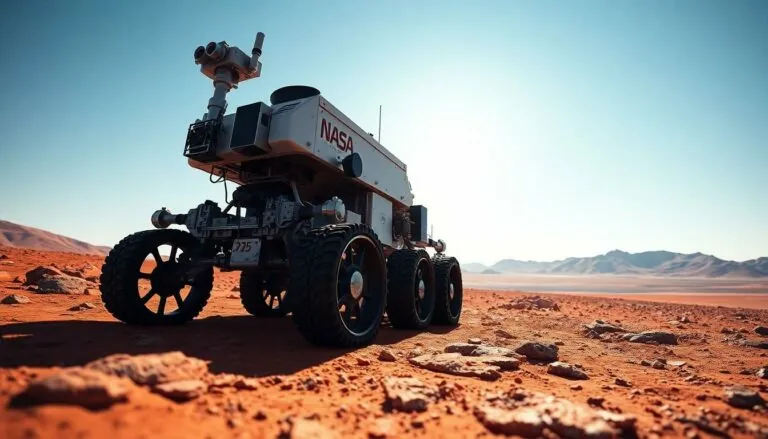Table of Contents
ToggleWhen it comes to drones, the term FPV pops up more often than a drone at a family barbecue. But what does FPV actually stand for? For those not in the know, it’s not just another techy acronym to throw around at parties to sound smart. FPV stands for First Person View, and it’s the magic that lets drone enthusiasts experience the thrill of flight from the pilot’s perspective.
Imagine soaring through the sky like a bird or a superhero—without the hassle of a cape. FPV technology transforms the way people interact with drones, making it feel like they’re in the cockpit, navigating through stunning landscapes or racing against friends. As we dive deeper into this exciting world, get ready to discover why FPV isn’t just a buzzword; it’s the gateway to an exhilarating aerial adventure.
Understanding FPV in Drones
FPV, or First Person View, refers to a technology that enables users to operate drones as if they are sitting in the cockpit. This immersive experience provides a unique perspective during flight.
Definition of FPV
First Person View denotes a method of controlling and piloting drones using a live video feed from the drone’s camera. This feed transmits real-time visuals to the pilot’s goggles or screen. With FPV systems, operators gain a sense of presence within the drone, enhancing control and interaction. Pilots can navigate with precision by seeing exactly what the drone sees. This technology includes components like cameras, video transmitters, and receiving devices that work together to create a seamless experience.
Importance of FPV Technology
FPV technology significantly enhances the flying experience for drone enthusiasts. It allows for improved situational awareness, making complex maneuvers easier to execute. Such immersion also facilitates racing, enabling pilots to compete effectively in organized events. FPV drones demonstrate agility and speed, appealing to hobbyists who seek adrenaline-pumping experiences. Many use FPV for capturing aerial footage, providing unique perspectives for filmmakers and content creators. Moreover, monitoring capabilities extend beyond hobbyist use, giving professionals a valuable tool for inspections and surveillance tasks.
Types of FPV Systems

FPV systems come in various types, each serving different needs and preferences among drone enthusiasts.
Analog vs. Digital FPV
Analog FPV systems transmit video signals wirelessly to goggles or screens. These systems offer lower latency, which is critical for racing and fast maneuvers. However, analog video quality may suffer from interference, affecting clarity. Digital FPV systems, on the other hand, provide high-definition video and superior image quality. They utilize advanced encoding technologies, which minimize latency while enhancing performance. Enthusiasts might choose analog for budget-friendly options, while digital appeals to those desiring greater video fidelity.
Components of an FPV System
Key components define an FPV system’s functionality. The camera collects real-time visuals, allowing pilots to see the drone’s perspective. A video transmitter sends signals to the pilot’s goggles or screen, providing an immersive experience. Goggles or monitors display the live feed, enabling smooth navigation. Antennas enhance transmission by improving signal strength and reducing interference. Additional parts like receivers and batteries also play critical roles, ensuring optimal system operation. Together, these components create a cohesive FPV experience tailored to individual pilot preferences.
Applications of FPV Drones
FPV drones serve a variety of applications, from recreational enjoyment to professional tasks. Enthusiasts and experts rely on this technology for numerous activities.
Recreational Use
Many hobbyists embrace FPV drones for thrilling recreational experiences. Racing events attract pilots seeking speed and competition, showcasing their skills in tight aerial maneuvers. Additionally, FPV drone flying allows users to explore remote locations with an immersive view that enhances the excitement of outdoor activities. Capturing stunning aerial photography and video adds another layer of enjoyment. These experiences foster a deeper connection to the drone and the environment.
Professional Use Cases
FPV drones also play crucial roles in various industries. Filmmakers leverage FPV technology to achieve unique shots and dynamic perspectives in their productions. Inspection professionals utilize these drones to assess infrastructure easily, conducting surveys of hard-to-reach areas. Agricultural specialists employ FPV drones for monitoring crops, collecting vital data for yield optimization. In security, FPV drones provide real-time surveillance, enhancing operational efficiency in various sectors. Such applications illustrate the growing significance and versatility of FPV drones in professional settings.
Getting Started with FPV Drones
FPV drones offer an immersive flying experience that appeals to both hobbyists and professionals. Understanding the necessary components and regulations is essential for effective usage.
Choosing the Right Equipment
Selecting the appropriate FPV equipment significantly impacts the flying experience. Consider different types of FPV systems, such as analog or digital, to match personal preferences. Analog systems provide lower latency, ideal for racing enthusiasts. Choose digital systems for high-definition video and exceptional image quality, perfect for filming. Essential components include cameras, video transmitters, goggles or monitors, antennas, receivers, and batteries. Research each element before purchasing to ensure compatibility and performance meet specific needs.
Safety and Regulations
Adhering to safety guidelines and regulations remains crucial when flying FPV drones. The Federal Aviation Administration (FAA) establishes rules that FPV operators must follow. Pilots should register their drones if they weigh over 0.55 pounds. Maintaining visual line-of-sight is also necessary unless utilizing a second observer. Understanding local laws helps avoid fines and promotes safe flying. Be proactive about safety management by checking airspace restrictions and weather conditions. Prioritize these regulations to enjoy the thrill of flying FPV drones responsibly.
FPV technology has transformed the way drone enthusiasts and professionals engage with aerial flight. By providing a first-person perspective through live video feeds pilots can navigate with enhanced precision and experience the thrill of flight like never before. The versatility of FPV drones spans from recreational racing to critical applications in filmmaking and inspections showcasing their importance across various fields.
As the popularity of FPV continues to grow understanding the different systems and components is crucial for anyone looking to dive into this exciting hobby or profession. With the right equipment and adherence to safety regulations pilots can enjoy a rewarding experience while maximizing the potential of their drones.




